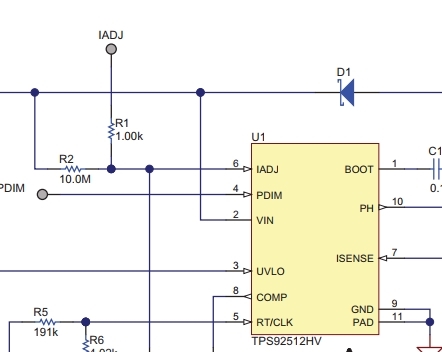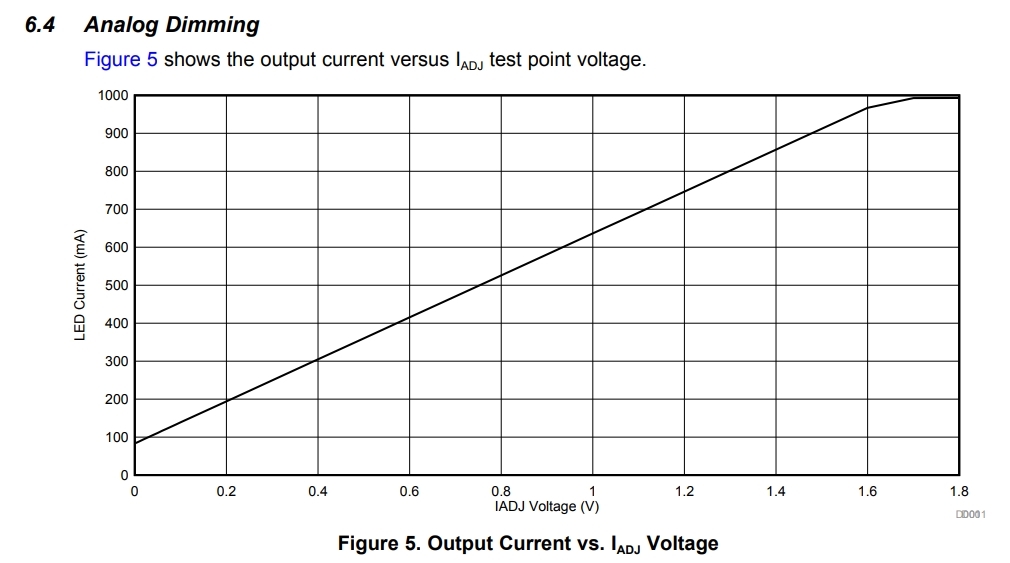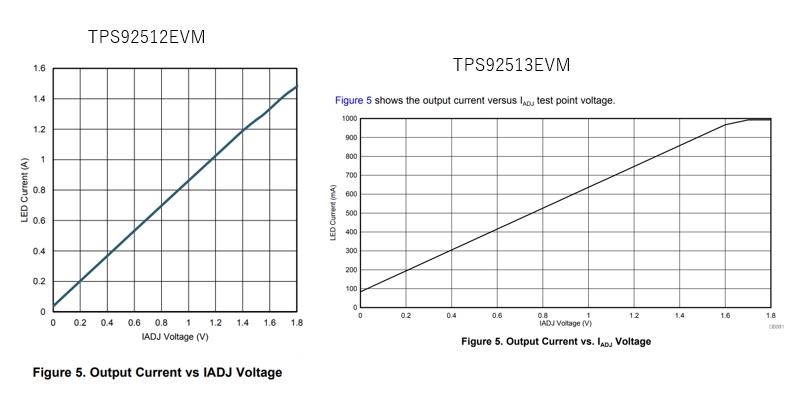Other Parts Discussed in Thread: TPS92513HV, TPS92512, TPS92513, TPS92640
Hi
IADJ pin is defined at the datasheet as below.
However the IADJ pin was clamped at 1.6V when the customer measured that pin on TI-EVM. How much is the max clamped voltage of this pin?
The clamp diode is integrated. How much is the variation of the clamp voltage? (typ:1.8V)
Also regarding VSENSE, the voltage of VSENSE is 300mV if Iiadj is 100uA.
On the other hands, VIADJ is 2.77V if the Iiadj is 100uA. And Equation (7) is VSENSE= VIADJ / 6.
That means VSENSE should be 461mV at Iiadj is 100uA. Why is VSENSE 300mV at Iiadj=100uA?
Regards,
Koji Hamamoto






